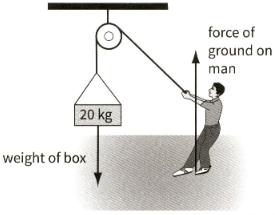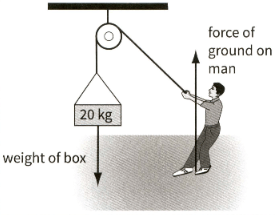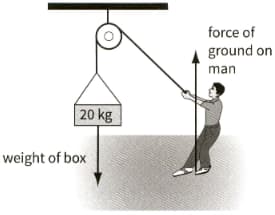A metal ball is dropped into a tall cylinder of oil. The ball initially accelerates but soon reaches a terminal velocity. By considering the forces on the metal ball bearing, explain why it first accelerates but then reaches terminal velocity.

Important Questions on Dynamics: Explaining Motion
A metal ball is dropped into a tall cylinder of oil. The ball initially accelerates but soon reaches a terminal velocity. State how you would show that the metal ball reaches terminal velocity. Suggest one cause of random errors in your readings.
Determine the speed in of an object that travels:
in
Determine the speed in of an object that travels:
in
Determine the speed in of an object that travels:
in .
The diagram shows a man who is just supporting the weight of a box. Two of the forces acting are shown in the diagram. According to Newton's third law, each of these forces is paired with another force.

For the weight of the box, and the force of the ground on the man.State the body on that the other force acts upon.
The diagram shows a man who is just supporting the weight of a box. Two of the forces acting are shown in the diagram. According to Newton's third law, each of these forces is paired with another force.

For the weight of the box, and the force of the ground on the man. State the direction of the other force acting on the system.
The diagram shows a man who is just supporting the weight of a box. Two of the forces acting are shown in the diagram. According to Newton's third law, each of these forces is paired with another force.

For the weight of the box, and the force of the ground on the man. Sate the type of forces involved.
A car starts to move along a straight, level road. For the first , the driver maintains a constant acceleration of . The mass of the car is . Calculate the driving force provided by the wheels, when the force opposing motion is negligible
